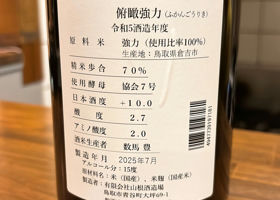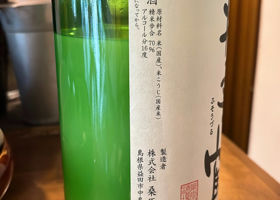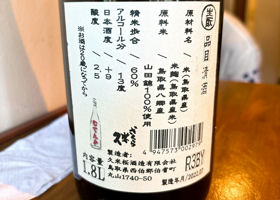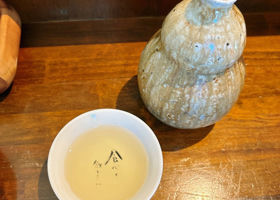Timeline
やす☆R5BY. slightly yellow in color. Warmed to a high temperature, it has a strong sharpness with acidity. やす☆It has a good balance between the mild umami of the rice and the sharpness of the sake with the acidity of the sake yeast. It becomes mellow when paired with duck roast. やす☆R4BY in warm water. The color is slightly yellow.
It has a mild umami and a sharpness accompanied by the acidity of Yamahai. The sense of maturity is modest. やす☆It has a firm umami and sharpness when heated. The nigori rice flavor is thick. やす☆R5BY was served warm. It has a clear, crisp flavor and is crisp and clean with the acidity of the sake yeast. The sense of maturity is slight. やす☆A joint brew with Sekiya Brewery, it was warmed to lukewarm. 47% polished, it has a soft, delicate sweetness that spreads and fades away with a gentle acidity.
I'm not sure if it's necessary to drink it warmed, but it's not bad warmed either. やす☆When the temperature is raised to warm up, it has a cloudy graininess and a sharpness with the acidity of the sake's sake yeast. やす☆R2BY in warm water. The color is pale yellow. It has a good balance of mild umami and sharpness. It has a sense of maturity, but it is moderate. やす☆Warmed. It has a mild mouthfeel with sweetness for a Suginishiki, and the acidity is gentle, but the sharpness is typical of Suginishiki. やす☆I drank it 3 years ago right after bottling, but I drank the home-aged R2BY warmed.
The color is slightly yellow. It has a mild flavor with a hint of maturity, not unlike a 70% polished sake. It also has a sharpness like a sake yeast yeast yeast. やす☆This is also a new R6BY sake brewed jointly with Gikyou. It was served warm.
The 60% polished sake has a delicate mouthfeel, but it is more refreshing and crisp than Senbyo, which is typical of Gohyakumangoku. やす☆New R6BY sake brewed jointly with Gikyo, served warm.
It has a gentle sweetness and umami flavor typical of 60% polished sake. The sharpness is not bad, but it is still gentle. It is good lukewarm. やす☆H30BY was warmed to a high temperature. The color is amber. It has a mellow, candy-like matured feeling and a sharpness with the acidity of a sake yeast. やす☆R1BY was served warm. The color is golden. It has a slight sense of maturity and sharpness with the acidity of a sake yeast. コイクマR3BY 14番熊 近所の農家さん編生酛原酒無濾過 やす☆R3BY was served warm. The color is amber. The mouthfeel is mild but crisp with a strong acidity. やす☆R3BY was served warm. Mellow and light at 13 degrees Celsius, with a nice crispness. When cooled, it has a gentle flavor typical of 60% polished sake. やす☆Warmed up. The color is amber, and although it is a 70% polished sake, it has a light and refreshing taste due to its 13% alcohol content, and it is sharp with the acidity of the sake. やす☆H27BY was served warm. The color is amber. It has a gentle Jungin-like flavor with a mild sense of maturity. It becomes sharp when it is cooled. やす☆R4BY was served warm. I forgot to take a picture, but the color is a light yellow. 70% polished, powerful, but with high acidity. I guess it is a sake made from sake yeast, though it is not stated. RecommendedContentsSectionView.title




























































